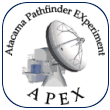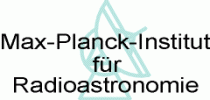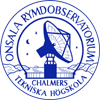SEPIA instrument

|
SEPIA contains three channels called SEPIA180 (ESO-OSO PI), SEPIA345 (facility) and SEPIA660 (facility). The receiver shares the backend with FLASH+ receiver, XFFTS, (PI instrument built by MPIfR, Bonn). The SEPIA180 frequency channel is a dual polarization 2SB receiver built to the specifications of ALMA band 5 with the RF band 159-211 GHz. The receiver is based on the pre-production ALMA Band 5 receiver cartridge, more technical details can be found in [1]. The receiver has two IF outputs per polarization, USB and LSB, 4-8 GHz, for a total of 16 GHz IF band. The sideband rejection ratio is >10 dB and 18.5 dB average. The single-sideband noise temperature of the Band 5 frequency channel is below 55K at all frequencies within the RF band. The SEPIA345 band intends to cover the frequency range between 272 and 376 GHz. Installation and commissioning are still pending and are expected for 2019 Q3. The SEPIA660 frequency channel is a dual polarization 2SB receiver installed and commissioned during the second half of 2018. It replaces the previous DSB receiver built to the specifications of ALMA band 9, based on a pre-production ALMA Band 9 receiver cartridge. See complete technical description in [2]. In the current incarnation (2SB), the receiver covers the RF frequency range 578-738 GHz. The receiver has two IF outputs (4-12 GHz) per polarization. The receiver temperature of the SEPIA660 frequency channel is below 350K at all frequencies within the RF band, and below 250K in the frequency range 600-700K. Observing time estimators
|
[2] For a technical description of the Band 9 receiver, please see the following publications:
R. Hesper, A. Khudchenko, M. Lindemulder, M. Bekema, R. de Haan-Stijkel, J. Barkhof, J. Adema and A. Baryshev, “A Deployable 600-720 GHz ALMA-Type Sideband-Separating Receiver Cartridge“, /proc. 29th ISSTT/, Pasadena, March 2018. http://www.nrao.edu/meetings/isstt/papers/2018/2018098103.pdf
R. Hesper, A. Khudchenko, A. M. Baryshev, J. Barkhof, and F. P. Mena, "A high-performance 650-GHz sideband-separating mixer - design and results," /IEEE Transactions on Terahertz Science and Technology/, vol. 7, no. 6, pp. 686Â-693, Nov 2017. DOI 10.1109/TTHZ.2017.2758270




